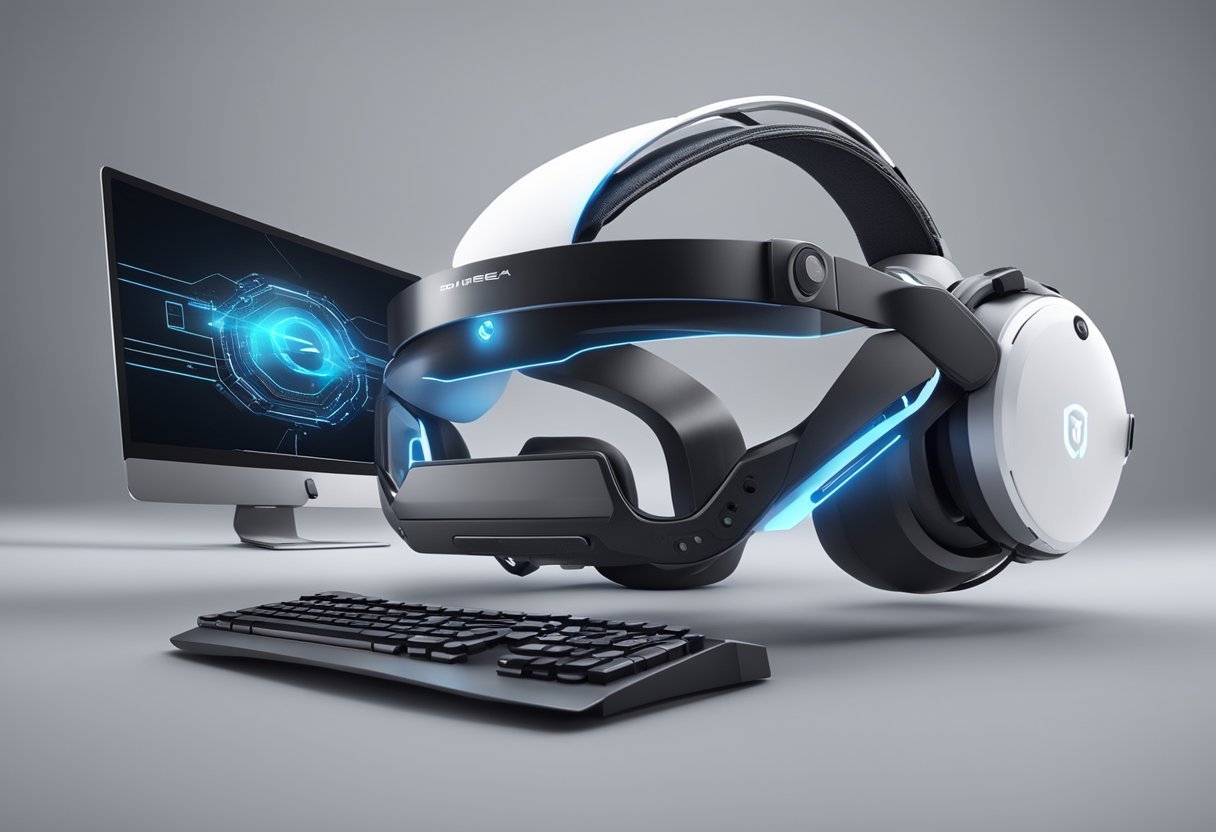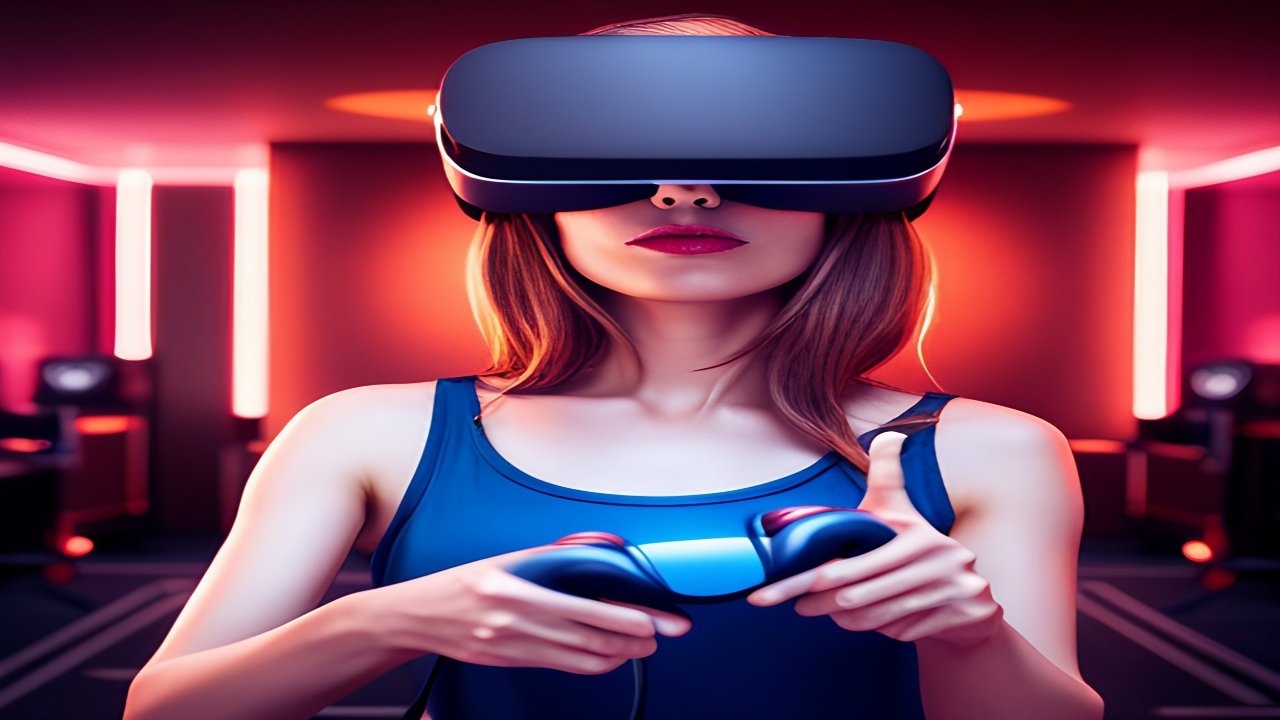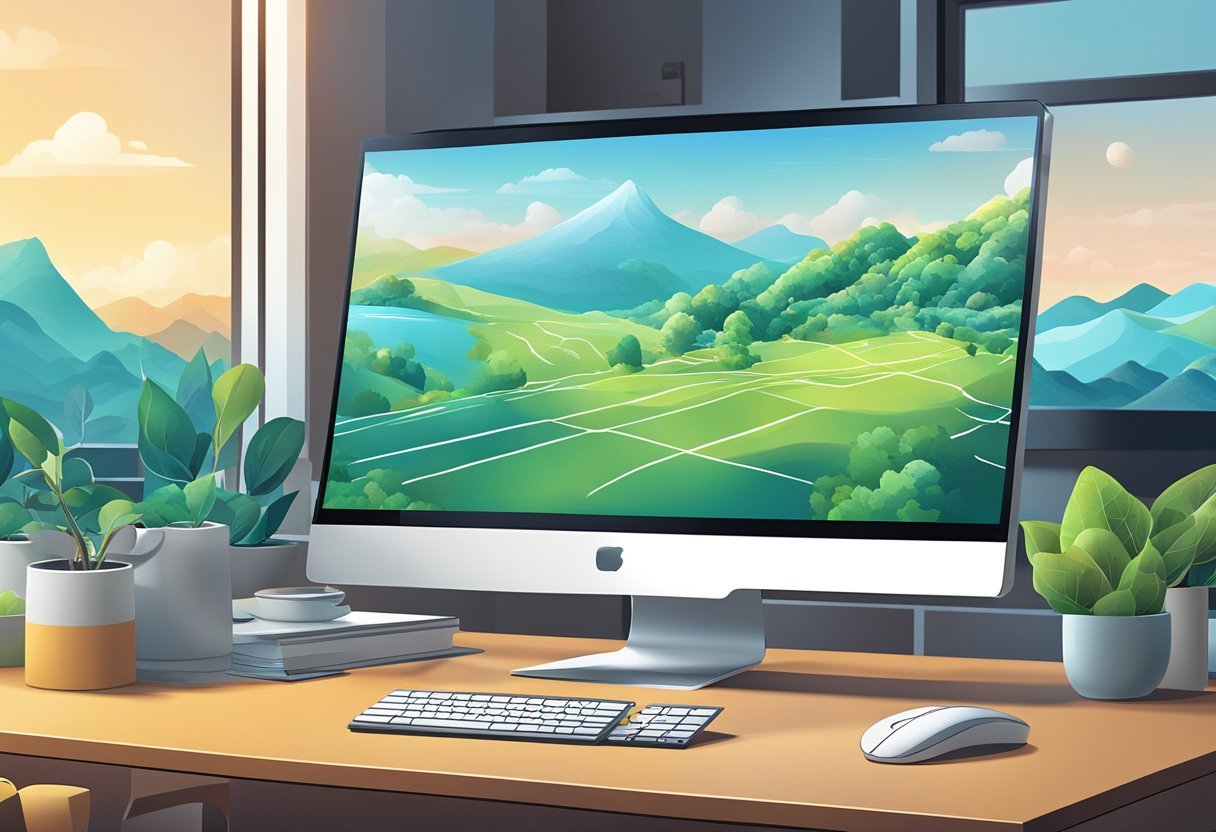Virtual reality (VR) technology has come a long way in recent years, and one of the most popular tools for creating VR experiences is the Unreal Engine. Developed by Epic Games, Unreal Engine is a powerful game engine that provides developers with the tools they need to create immersive and engaging VR experiences. With Unreal Engine, developers can create everything from simple VR demos to complex, multi-level games that take full advantage of the latest VR technology.
Unreal Engine is a versatile tool that can be used to create VR experiences for a wide range of platforms, including Oculus, HTC Vive, and PlayStation VR. The engine features a robust set of tools for creating VR content, including support for motion controllers, haptic feedback, and advanced rendering techniques that can help create realistic and immersive VR environments. Unreal Engine provides developers with a range of pre-built assets and templates that can help speed up the development process and ensure that VR experiences are optimized for performance and visual quality.
Whether you’re an experienced game developer or just getting started with VR development, Unreal Engine provides the tools and resources you need to create engaging and immersive VR experiences. With its powerful set of features and support for a wide range of VR platforms, Unreal Engine is a popular choice for developers looking to create cutting-edge VR content.
Understanding VR and Unreal Engine
VR Fundamentals
Virtual Reality (VR) is an immersive technology that allows users to experience a simulated environment in 3D. VR technology has advanced significantly in recent years, with a growing number of applications, including gaming, training, education, and more.
VR technology has become increasingly popular due to the level of immersion it provides, allowing users to interact with virtual objects and spaces in a way that is not possible with traditional 2D displays.
Unreal Engine Overview
Unreal Engine is a powerful game engine that is widely used in the game development industry. It is a popular choice for VR development due to its robust features, flexibility, and ease of use. Unreal Engine provides a range of tools and features that are specifically designed for VR development, including support for popular VR headsets, such as Oculus Rift, HTC Vive, and Windows Mixed Reality.
Unreal Engine provides a range of features that make it ideal for VR development, including advanced 3D rendering, physics simulation, and animation tools. It also provides a range of project settings that allow developers to optimize their projects for different VR platforms and operating systems.
Unreal Engine is an excellent choice for VR development, providing developers with the tools and features they need to create immersive and engaging VR experiences.
Setting Up Your VR Project
When it comes to setting up a VR project in Unreal Engine, there are a few key things to keep in mind. This section will cover the necessary steps to get started, including project configuration and choosing the right VR template.
Project Configuration
First, it is important to configure your project settings to ensure that it is optimized for VR. This can be done by modifying the DefaultEngine.ini file, which can be found in the Config folder of your project.
Within this file, there are a number of settings that can be adjusted to improve performance and ensure compatibility with VR hardware. This includes settings related to rendering, input, and performance.
It is recommended that you consult the Unreal Engine documentation for more information on these settings, as they can be quite complex.
Choosing the Right VR Template
Once your project is configured for VR, it is time to choose the right VR template to use as a starting point. There are a number of different templates available, each with its own strengths and weaknesses.
One popular option is the VR Template, which is designed to be a starting point for all VR projects in Unreal Engine. This template includes a number of pre-built features and components, including a teleportation system and basic interaction mechanics.
Another option is to create your own VR project from scratch, using either C++ or Blueprint. This can be a more time-consuming process, but it offers greater flexibility and control over the final product.
Ultimately, the choice of which VR template to use will depend on your specific needs and goals for the project. It is recommended that you experiment with different templates and approaches to find the one that works best for you.
Designing for VR Interaction
Designing for VR interaction requires a different approach compared to traditional game design. Developers must consider the user’s physical presence in the virtual environment and design interactions that feel natural and intuitive. This section will cover some of the key considerations when designing for VR interaction.
Input and Controllers
One of the most important aspects of VR interaction is the input method. In VR, users can interact with the virtual environment using a variety of input devices, including motion controllers, gamepads, and even custom input devices. Developers must consider the strengths and limitations of each input method when designing interactions.
Unreal Engine provides a suite of tools specifically designed for VR development, including the VR Editor and the Blueprint Visual Scripting system. The VR Editor allows developers to build and edit VR environments in real-time, while the Blueprint Visual Scripting system provides a user-friendly way to script complex VR functionalities.
User Interface in VR
User interface (UI) design is another important aspect of VR interaction. In VR, UI elements must be designed to work in a 3D space and be easy to interact with using motion controllers. Developers must also consider the user’s physical comfort when designing UI elements.
Unreal Engine provides a VR Interaction Kit that allows developers to enhance their VR applications with interactive features. The kit offers a wide range of capabilities, including grabbing objects, interacting with UI, and recognizing hand gestures.
When designing UI elements, developers must consider the user’s physical comfort and ensure that the UI is easy to interact with using motion controllers. They can also use techniques like teleportation and locomotion to help users navigate the virtual environment.
Designing for VR interaction requires a different approach compared to traditional game design. Developers must consider the user’s physical presence in the virtual environment and design interactions that feel natural and intuitive.
Unreal Engine provides a suite of tools specifically designed for VR development, including the VR Editor and the Blueprint Visual Scripting system. Developers can also use the VR Interaction Kit to enhance their VR applications with interactive features.
Optimizing VR Performance
Unreal Engine is a powerful tool for creating immersive virtual reality experiences. However, achieving smooth and consistent performance in VR can be a challenge. In this section, we will explore some techniques for optimizing VR performance in Unreal Engine.
Performance Profiling
Performance profiling is a critical step in optimizing VR performance. By analyzing the performance of your VR application, you can identify performance bottlenecks and optimize your code accordingly. Unreal Engine provides a range of profiling tools that can help you identify performance issues in your VR application.
One of the most important performance metrics in VR is framerate. Maintaining a consistent framerate is crucial for providing a smooth and comfortable VR experience. Unreal Engine provides a range of tools for monitoring and optimizing framerate, including the “stat fps” command, which displays the current framerate in the console.
Rendering Settings for VR
Rendering is a critical aspect of VR performance, and Unreal Engine provides a range of rendering settings that can be optimized for VR. One important setting is “r.separatetranslucency”, which controls how translucent materials are rendered in VR. Enabling this setting can improve performance by reducing the number of draw calls required for translucent materials.
Another important setting is “r.hzbocclusion”, which controls the use of hierarchical occlusion culling. Enabling this setting can improve performance by reducing the number of objects that need to be rendered in the scene.
Finally, “VR Instanced Stereo” is a feature that can significantly improve VR performance by reducing the number of draw calls required for stereo rendering. This feature is enabled by default in Unreal Engine 4.19 and later versions.
By optimizing rendering settings and using performance profiling tools, you can achieve smooth and consistent performance in your VR application.
Deploying to VR Platforms
Deploying a VR application created with Unreal Engine is the process of making it available for users to experience on different VR platforms. This section will discuss some of the important considerations when deploying to VR platforms.
Supporting Various HMDs
VR platforms support different head-mounted displays (HMDs) that have their own specifications and requirements. Therefore, it is important to ensure that the VR application is compatible with all the HMDs that the developer intends to support.
Unreal Engine provides support for various HMDs, including Oculus Rift, HTC Vive, Oculus Rift S, and Windows Mixed Reality. To ensure compatibility, developers must test their VR application on each HMD and make any necessary adjustments to ensure that it works correctly.
Integrating with VR SDKs
VR platforms also require integration with their respective software development kits (SDKs) to enable the VR application to communicate with the platform. Unreal Engine provides support for various VR SDKs, including OpenXR, Oculus SDK, and SteamVR.
Developers must ensure that their VR application integrates with the appropriate VR SDK for the platform they are targeting. This involves configuring the VR SDK settings and making any necessary changes to the application code to enable communication with the VR SDK.
Deploying a VR application created with Unreal Engine requires careful consideration of the various VR platforms and HMDs that the developer intends to support. By ensuring compatibility with the appropriate VR SDK and testing on each HMD, developers can create a successful VR application that provides an immersive experience to users.
Unreal Engine vs. Unity vs. Godot
When it comes to choosing the right game engine for VR development, Unreal Engine, Unity, and Godot are three of the most popular options. While each engine has its own unique strengths and weaknesses, there are some key differences and similarities that developers should be aware of.
Differences
- Graphics: Unreal Engine is known for its powerful rendering capabilities, making it a popular choice for creating visually stunning VR experiences. Unity and Godot are also capable of producing high-quality graphics, but they may not be as advanced as Unreal Engine in this area.
- Ease of use: Unity is often considered to be the most beginner-friendly of the three engines, with a user-friendly interface and a large community of developers offering support. Unreal Engine and Godot can be more challenging to learn, but they offer more advanced features and customization options.
- Pricing: While Unity and Godot are both free to use, Unreal Engine requires developers to pay a 5% royalty fee on any revenue earned from their projects. This can make Unreal Engine a more expensive option for developers who are just starting out.
Similarities
- Multiplatform support: All three engines support multiple platforms, including PC, mobile, and console. This makes it easier for developers to create VR experiences that can be enjoyed by a wide range of users.
- Community support: Each engine has a large and active community of developers, offering tutorials, forums, and other resources to help developers learn and troubleshoot.
- Visual scripting: Unreal Engine and Unity both offer visual scripting tools that allow developers to create complex game mechanics without needing to write code. Godot also offers a similar feature called GDScript.
The choice between Unreal Engine, Unity, and Godot will depend on a developer’s specific needs and preferences. While each engine has its own strengths and weaknesses, all three are capable of creating high-quality VR experiences.
Frequently Asked Questions
How do I set up VR development with Unreal Engine for Oculus Quest?
To set up VR development with Unreal Engine for Oculus Quest, the first step is to download and install the Oculus Integration Plugin for Unreal Engine.
This plugin provides the necessary tools and features to develop VR applications for Oculus Quest. After installing the plugin, developers should follow the Oculus Quest development guidelines provided by Oculus to ensure that their application is optimized for the Quest platform.
Where can I find the latest version of Unreal Engine for VR development?
The latest version of Unreal Engine can be found on the official Unreal Engine website. Developers can download the engine for free and use it to develop VR applications. It is recommended to always use the latest version of Unreal Engine for VR development to take advantage of the latest features and improvements.
What improvements does Unreal Engine 5 bring to VR game development?
Unreal Engine 5 brings several improvements to VR game development, including enhanced graphics capabilities, improved performance, and more efficient workflows.
The engine’s new Nanite technology allows for more detailed and complex scenes, while the Lumen lighting system provides more realistic lighting and shadows. The engine’s new World Partition system allows for more efficient use of memory and faster loading times.
What are the best practices for optimizing VR performance in Unreal Engine?
To optimize VR performance in Unreal Engine, developers should follow several best practices. These include reducing the number of draw calls and poly counts, optimizing textures and materials, using LODs (Level of Detail) for distant objects, and using culling techniques to avoid rendering unnecessary objects. It is also important to test the application on the target platform and make optimizations based on the results.
How can I create a VR tutorial using Unreal Engine 5?
To create a VR tutorial using Unreal Engine 5, developers should first create a basic VR application using the engine’s VR template.
They can then add interactive elements, such as buttons or triggers, and create a sequence of events that guide the user through the tutorial. It is important to test the tutorial thoroughly to ensure that it is easy to follow and understand.
What is the Unreal Engine VR Injector and how is it used?
The Unreal Engine VR Injector is a tool that allows developers to inject VR support into non-VR games created with Unreal Engine.
This tool is useful for developers who want to add VR support to their existing games without having to rebuild them from scratch. The VR Injector works by adding VR-specific code to the game’s executable file, which allows it to be used with VR headsets.




